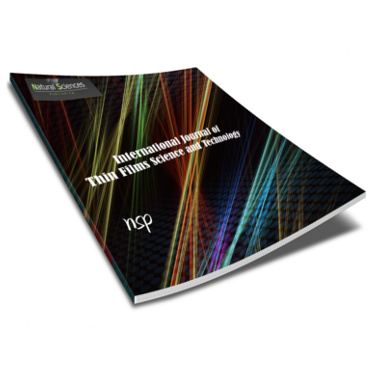International Journal of Thin Film Science and Technology

Abstract
Peripheral arterial disorder (PAD) is a common vascular disorder caused primarily by atherosclerosis, it leads to a decrease in blood flow in the legs. The theory of high tone external muscle stimulation (HTEMS) first in transmitting possibly the highest dose of energy into tissues by high frequency, and second by the resonance effect inducing oscillation of cellular and tissue structures improves cell metabolism, leading to analgesic, circulatory effects. The aim of the study was to investigate the effect of HTEMS on endothelial dysfunction and walking parameters in PAD. Methods: 60 diabetic patients with moderate stage PAD based on their ankle brachial pressure index (ABPI) which ranged from 0.4 to 0.7 with IC and their age ranged from 40 to 70 years , selected from an outpatient clinic of Vascular Medicine Department, Cairo University Hospitals, were assigned randomly into two groups A&B. Group (A) (HTEMS group) included 30 patients who received high tone external muscle stimulation performed for 60 minutes per session, 3 times per week, for 12 weeks, in addition to their medical treatment. Group (B) (Exercise group) included 30 patients who participated in supervised regular aerobic exercise training program on treadmill with moderate intensity, (score 12-14 on Borg scale for rate of perceived exertion) 40 minutes per session, 3 times per week, for 12 weeks in addition to their medical treatment. The endpoints of this study were nitric oxide (NO) and walking parameters which are claudication Pain distance (CPD), claudication pain time (CPT), Peak walking distance (PWD), Peak walking time (PWT). Results: comparing both groups post treatment revealed statically significant improvement in group A and B with no significant difference between them in all parameters, as the percent increase in CPD value in groups A and B was 108.46% and 112.78%, respectively, while it was 95.30% and 102.18% in CPT in group A and B respectively. The percent increase in PWD value in groups A and B was 90.36% and 91.31%, respectively, while it was 96.29% and 99.03%, in PDT in group A and B respectively. The percent increase in the NO mean value in groups A and B was 17.94% and 17.36%, respectively. Conclusion: HTEMS had positive influence in the improvement of walking capacity and endothelial function in patients with PAD. It might also be employed as an alternative modality to exercise training, especially for patients with PAD who cannot adhere to exercise training or where the exercise is contraindicated
Recommended Citation
Abdel Basit Abdel Moez, Rania; Abdel Aziz Abdel Hady, Azza; Abdel Kader Attia, Fatma; and Gharib El Nahas, Nesreen
(2022)
"High Tone External Muscle Stimulation versus Aerobic Exercise on Endothelial Dysfunction and Walking Parameters in Peripheral Arterial Disease,"
International Journal of Thin Film Science and Technology: Vol. 11
:
Iss.
4
, PP -.
Available at:
https://digitalcommons.aaru.edu.jo/ijtfst/vol11/iss4/2

